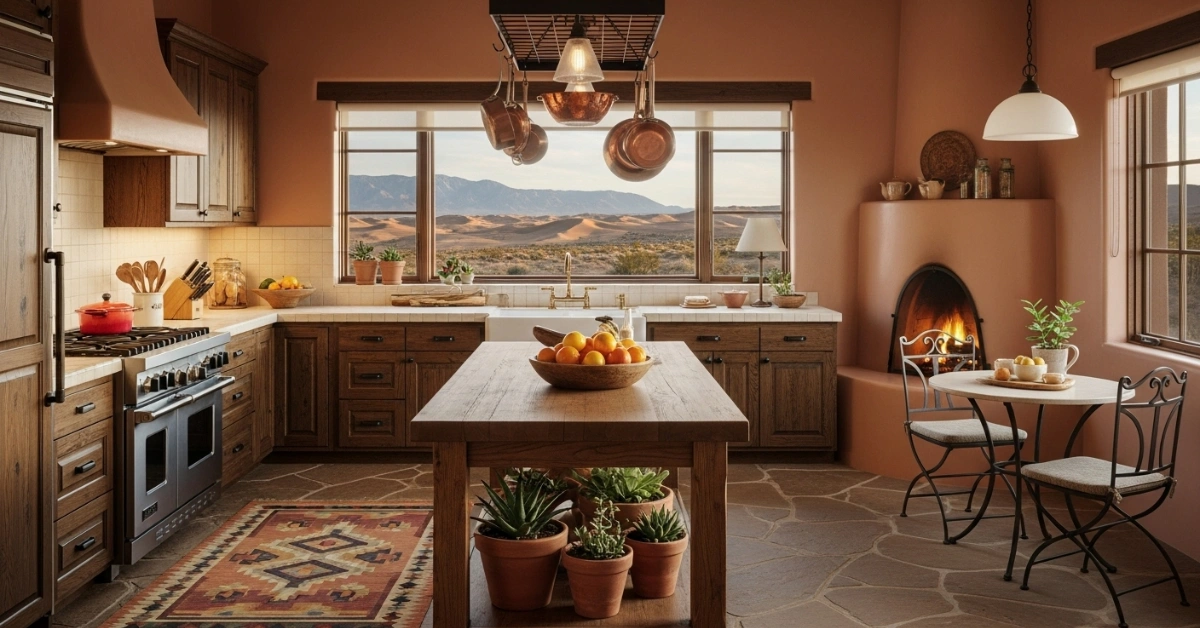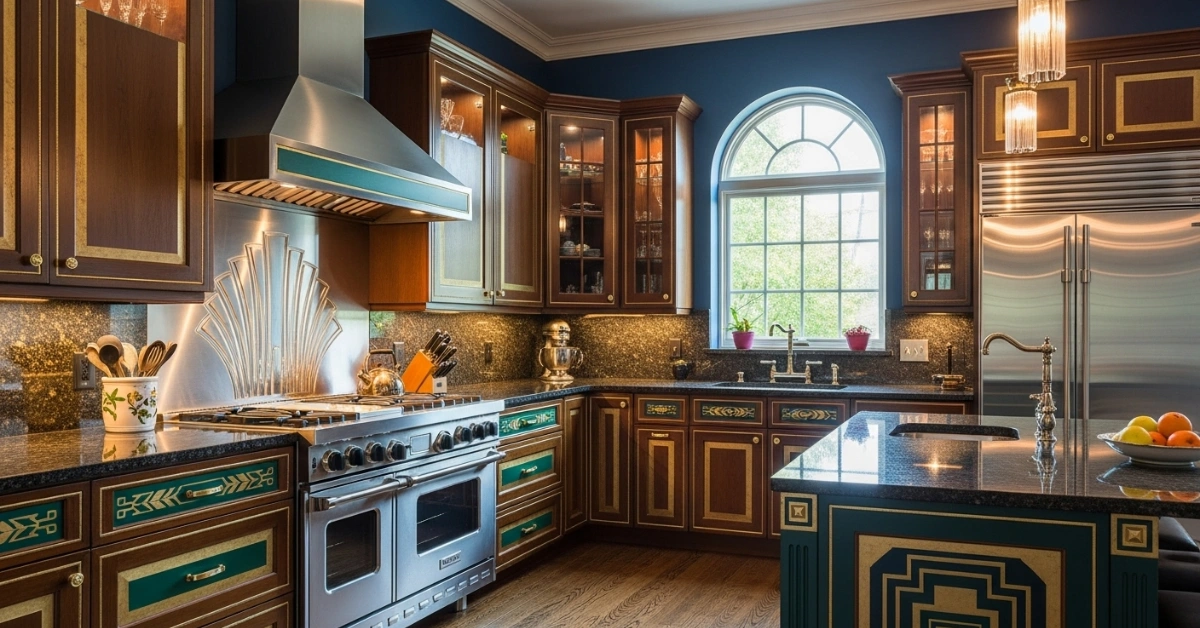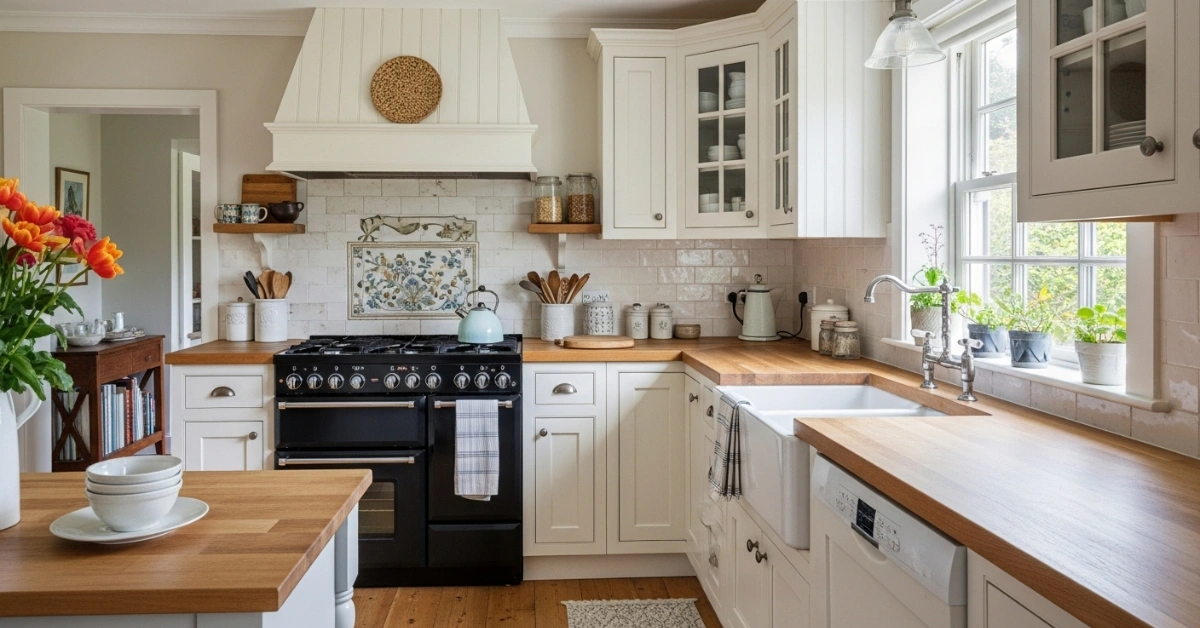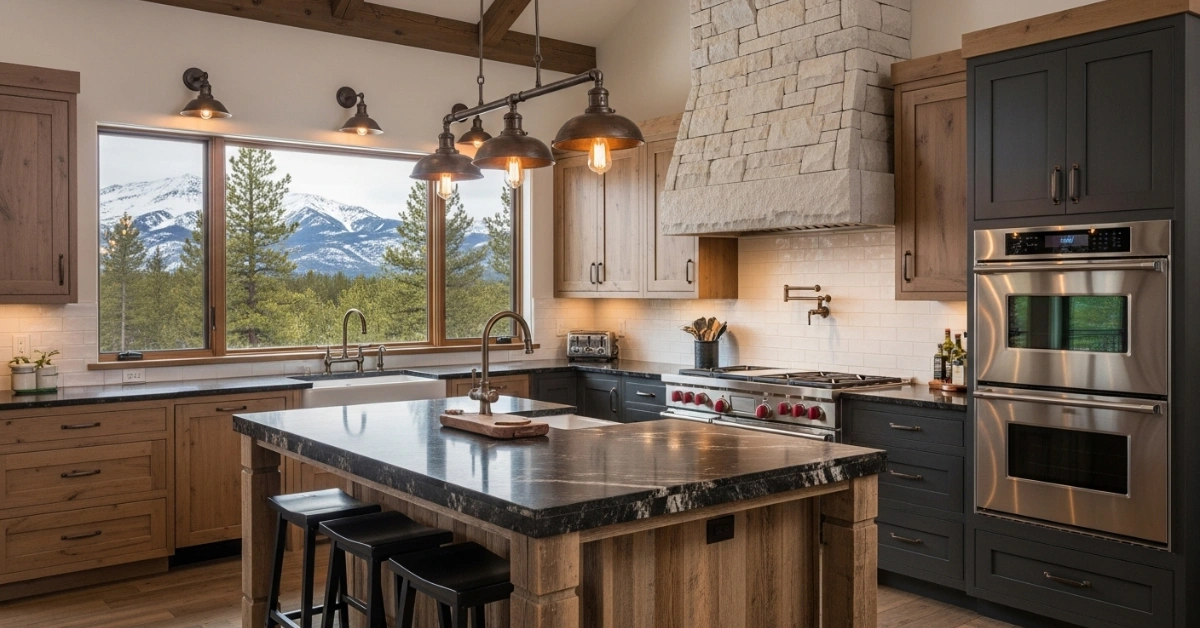Scandinavian Kitchen Ideas: 20+ Cozy & Functional Designs
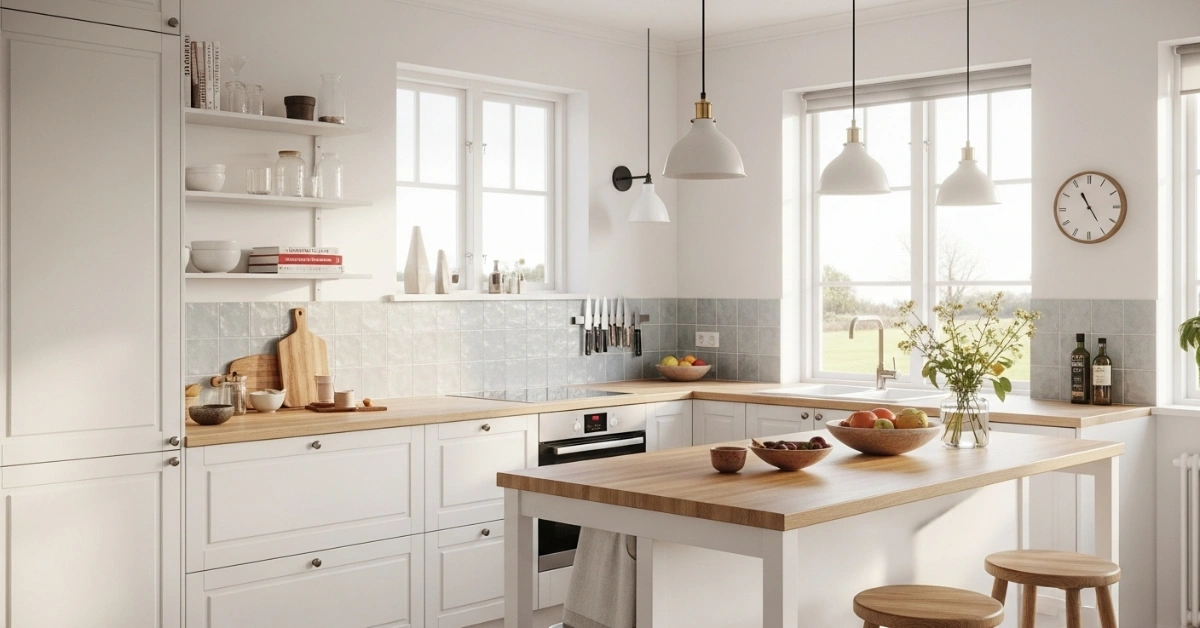
Struggling to create a kitchen that’s both stylish and practical? Many homeowners face the challenge of balancing aesthetics with functionality, often ending up with cluttered or uninspiring spaces. The Scandinavian kitchen offers a perfect solution, blending minimalist design with warmth and efficiency. In this guide, we’ll explore the principles of Scandinavian kitchen design, share practical tips, and provide inspiration to transform your kitchen into a cozy, timeless haven.
What Is a Scandinavian Kitchen?
A Scandinavian kitchen embodies the core principles of Scandinavian design: simplicity, functionality, and beauty. Originating from Nordic countries like Sweden, Denmark, and Norway, this style emphasizes clean lines, natural materials, and a neutral color palette. According to Dwell Magazine (2023), Scandinavian design gained global popularity in the mid-20th century for its ability to create serene, clutter-free spaces. It’s ideal for homeowners seeking a kitchen that feels open, inviting, and effortlessly chic.

Key Characteristics of a Scandinavian Kitchen
- Minimalism: Focus on essential elements, avoiding unnecessary clutter.
- Neutral Tones: Whites, grays, and soft pastels dominate the color scheme.
- Natural Materials: Wood, stone, and linen add warmth and texture.
- Functionality: Every item serves a purpose, enhancing daily usability.
- Natural Light: Large windows and light colors maximize brightness.
“A Scandinavian kitchen is like a breath of fresh air it’s calm, practical, and endlessly inspiring.” – Anna Eriksson, Nordic interior designer.
Why Choose a Scandinavian Kitchen?
The appeal of a Scandinavian kitchen lies in its versatility. Whether you have a small apartment or a spacious home, this design adapts beautifully. It’s also timeless, ensuring your kitchen stays stylish for years. Here’s why it’s a top choice:
- Space Efficiency: Perfect for small kitchens, with clever storage solutions.
- Cozy Ambiance: Warm textures prevent the space from feeling sterile.
- Low Maintenance: Simple designs are easy to clean and maintain.
- Sustainability: Emphasis on natural, durable materials aligns with eco-conscious living.

In my own experience renovating a compact urban kitchen, adopting Scandinavian principles like open shelving and a muted color palette made the space feel larger and more inviting.
Designing Your Scandinavian Kitchen: Core Elements
Creating a kitchen starts with understanding its foundational elements. Let’s break down the essentials to help you design a space that’s both beautiful and functional.
1. Color Palette: Keep It Light and Airy
These kitchens rely on a neutral color palette to create a bright, welcoming atmosphere. White is the go-to base color, often paired with soft grays, beige, or pastel accents like pale blue or mint green. These hues reflect light, making even small kitchens feel spacious.
- Primary Colors: White, light gray, cream.
- Accent Colors: Soft pastels, muted greens, or blush pink.
- Pro Tip: Use a single bold accent color sparingly (e.g., a mustard-yellow vase) to add personality without overwhelming the space.

2. Materials: Embrace Nature
Natural materials are the heart of a Scandinavian kitchen. Wood, in particular, adds warmth and texture. According to Architectural Digest (2024), light woods like oak, ash, or birch are staples in Nordic design.
- Countertops: Opt for butcher block, quartz, or natural stone.
- Cabinets: Choose light wood or matte white finishes.
- Textiles: Incorporate linen or cotton for curtains and towels.
- Example: In a recent project, I used reclaimed oak for open shelves, paired with white cabinetry, to create a warm yet modern look.

3. Lighting: Maximize Natural and Artificial Light
Nordic countries prioritize natural light due to their long, dark winters. Large windows, skylights, or glass doors are common in a Scandinavian kitchen. Complement natural light with strategic artificial lighting.
- Pendant Lights: Sleek, minimalist designs in brass or matte black.
- Under-Cabinet Lighting: Brightens countertops for functionality.
- Pro Tip: Choose warm-toned bulbs (2700K–3000K) to enhance coziness.

4. Storage: Smart and Stylish Solutions
A clutter-free kitchen is a hallmark of Scandinavian design. Smart storage keeps surfaces clean and functional.
- Open Shelving: Display ceramics or glassware for a curated look.
- Pull-Out Drawers: Maximize space in lower cabinets.
- Hidden Storage: Use toe-kick drawers or corner cabinets for extra space.
- Designer Tip: “Open shelves work best when you display only what you love think quality over quantity,” says Lars Jensen, Danish interior designer.

5. Furniture and Layout: Form Meets Function
Scandinavian kitchens prioritize ergonomic layouts. The “work triangle” (sink, stove, refrigerator) ensures efficiency. Furniture, like dining tables or bar stools, should be simple yet stylish.
- Tables: Round or rectangular wooden tables with clean lines.
- Seating: Upholstered chairs in neutral fabrics or wooden stools.
- Example: A small Scandinavian kitchen I visited featured a foldable wall-mounted table, perfect for saving space without sacrificing style.

Scandinavian Kitchen Styles: Find Your Perfect Fit
The Scandinavian kitchen can be adapted to various aesthetics. Here are three popular variations to inspire you:
1. Classic Scandinavian
This style sticks to the traditional Nordic look: white walls, light wood, and minimal decor. It’s clean and timeless, perfect for purists.
- Key Features: White cabinetry, wooden countertops, simple ceramics.
- Best For: Small spaces or those seeking a minimalist vibe.
- Inspiration: Add a single potted plant, like a fiddle-leaf fig, for a touch of green.

2. Modern Scandinavian
A contemporary take, blending sleek finishes with bold accents. Think matte black hardware or geometric tiles.
- Key Features: Mixed metals, bold backsplashes, modern appliances.
- Best For: Urban homes or those who love a trendy edge.
- Pro Tip: Use a patterned tile backsplash in neutral tones to add visual interest.
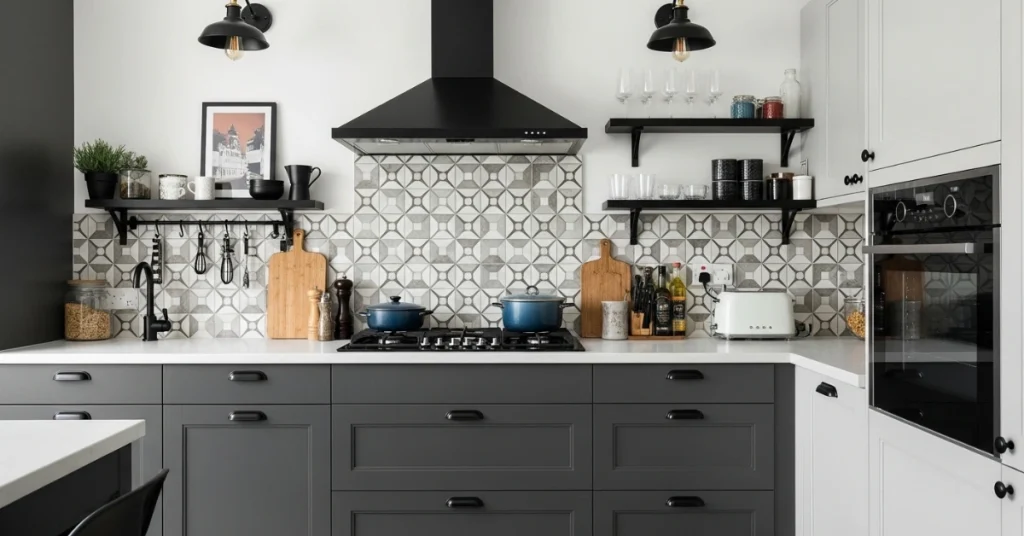
3. Rustic Scandinavian
This style incorporates cozy, farmhouse-inspired elements while maintaining simplicity. Exposed beams or distressed wood add character.
- Key Features: Textured wood, woven baskets, vintage-inspired fixtures.
- Best For: Larger kitchens or countryside homes.
- Example: A rustic Scandinavian kitchen I saw in Sweden used reclaimed barn wood for a stunning island countertop.

Practical Tips for Creating Your Scandinavian Kitchen
Ready to bring the Scandinavian kitchen to life? Here are actionable tips to get started:
- Declutter First: Remove unnecessary items to embrace minimalism.
- Invest in Quality: Choose durable materials like solid wood or stone.
- Add Texture: Use woven rugs or linen napkins to soften the space.
- Incorporate Greenery: Small plants or herbs add life and color.
- Mix Old and New: Pair vintage finds with modern appliances for charm.

“The beauty of a Scandinavian kitchen lies in its simplicity every item should have a purpose and a story.” – Maria Lund, Swedish design expert.
Common Mistakes to Avoid
Even the best intentions can go awry. Here are pitfalls to steer clear of when designing your Scandinavian kitchen:
- Overcrowding: Too many decor items disrupt the minimalist aesthetic.
- Ignoring Functionality: Prioritize workflow over purely decorative choices.
- Cold Color Schemes: Avoid stark whites without warm accents to prevent a sterile look.
- Poor Lighting: Insufficient lighting can make the space feel cramped.
Scandinavian Kitchen Inspiration: Real-Life Examples
To spark your creativity, here are three Scandinavian kitchen designs from real homes:
Example 1: Compact City Kitchen
- Location: Stockholm, Sweden
- Features: White cabinetry, oak shelves, brass pendant lights.
- Why It Works: The small space feels airy thanks to reflective surfaces and strategic lighting.

Example 2: Family-Friendly Kitchen
- Location: Copenhagen, Denmark
- Features: Gray cabinets, butcher block island, cozy dining nook.
- Why It Works: The layout balances open space with family-friendly functionality.

Example 3: Rustic Retreat
- Location: Rural Norway
- Features: Exposed beams, stone countertops, vintage ceramics.
- Why It Works: Textured materials create a warm, inviting atmosphere.

Comparison Table: Scandinavian Kitchen Styles
| Style | Key Features | Best For | Budget Level |
|---|---|---|---|
| Classic Scandinavian | White walls, light wood, minimal decor | Small spaces, purists | Low–Medium |
| Modern Scandinavian | Sleek finishes, bold accents, mixed metals | Urban homes, trendy aesthetics | Medium–High |
| Rustic Scandinavian | Textured wood, vintage elements | Larger homes, cozy vibes | Medium–High |
How to Maintain Your Scandinavian Kitchen
A Scandinavian kitchen is designed for low maintenance, but regular care keeps it looking pristine.
- Clean Surfaces: Wipe down countertops daily to prevent stains.
- Protect Wood: Use cutting boards to avoid scratches on wooden surfaces.
- Refresh Textiles: Wash linens regularly to maintain a fresh look.
- Pro Tip: Apply a food-safe sealant to wooden countertops annually for durability.

Budget-Friendly Scandinavian Kitchen Ideas
You don’t need a big budget to create a stunning Scandinavian kitchen. Here are cost-effective ideas:
- Paint Existing Cabinets: A fresh coat of white paint transforms old cabinets.
- DIY Open Shelves: Use affordable wood planks for custom shelving.
- Shop Secondhand: Find vintage Scandinavian-style pieces at thrift stores.
- Example: I once scored a set of mid-century Danish bar stools for $50 at a flea market, adding authentic charm to a budget kitchen.

Conclusion:
A Scandinavian kitchen is more than a design trend—it’s a lifestyle choice that prioritizes simplicity, functionality, and beauty. By focusing on neutral colors, natural materials, and smart storage, you can craft a space that’s both practical and inspiring. Whether you’re starting from scratch or refreshing an existing kitchen, these ideas and tips will guide you toward a timeless, cozy haven.
Ready to transform your kitchen? Start by decluttering and choosing one Scandinavian element to incorporate today whether it’s a light wood shelf or a minimalist pendant light. Share your progress or get personalized advice from a local designer to bring your vision to life!


